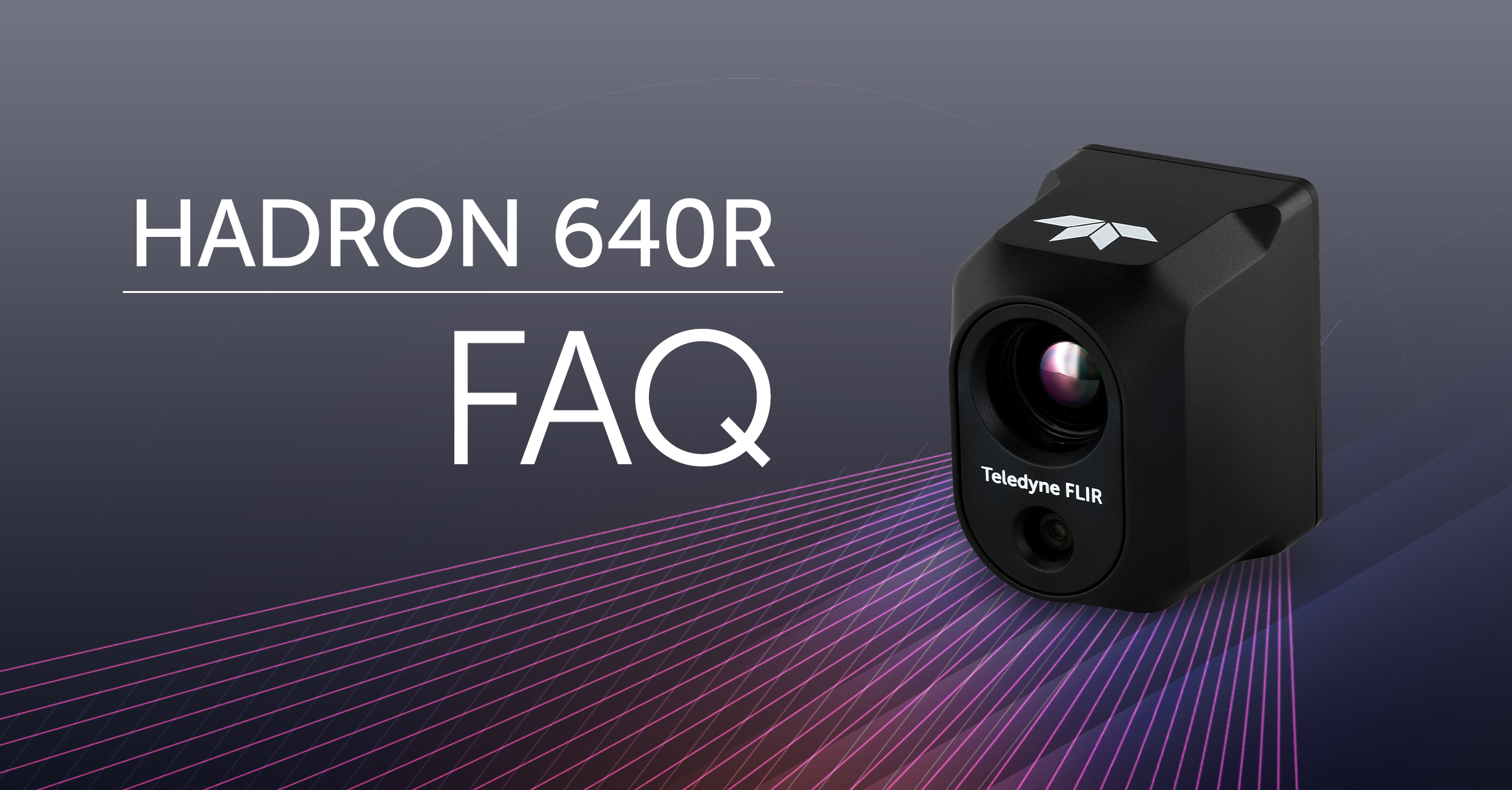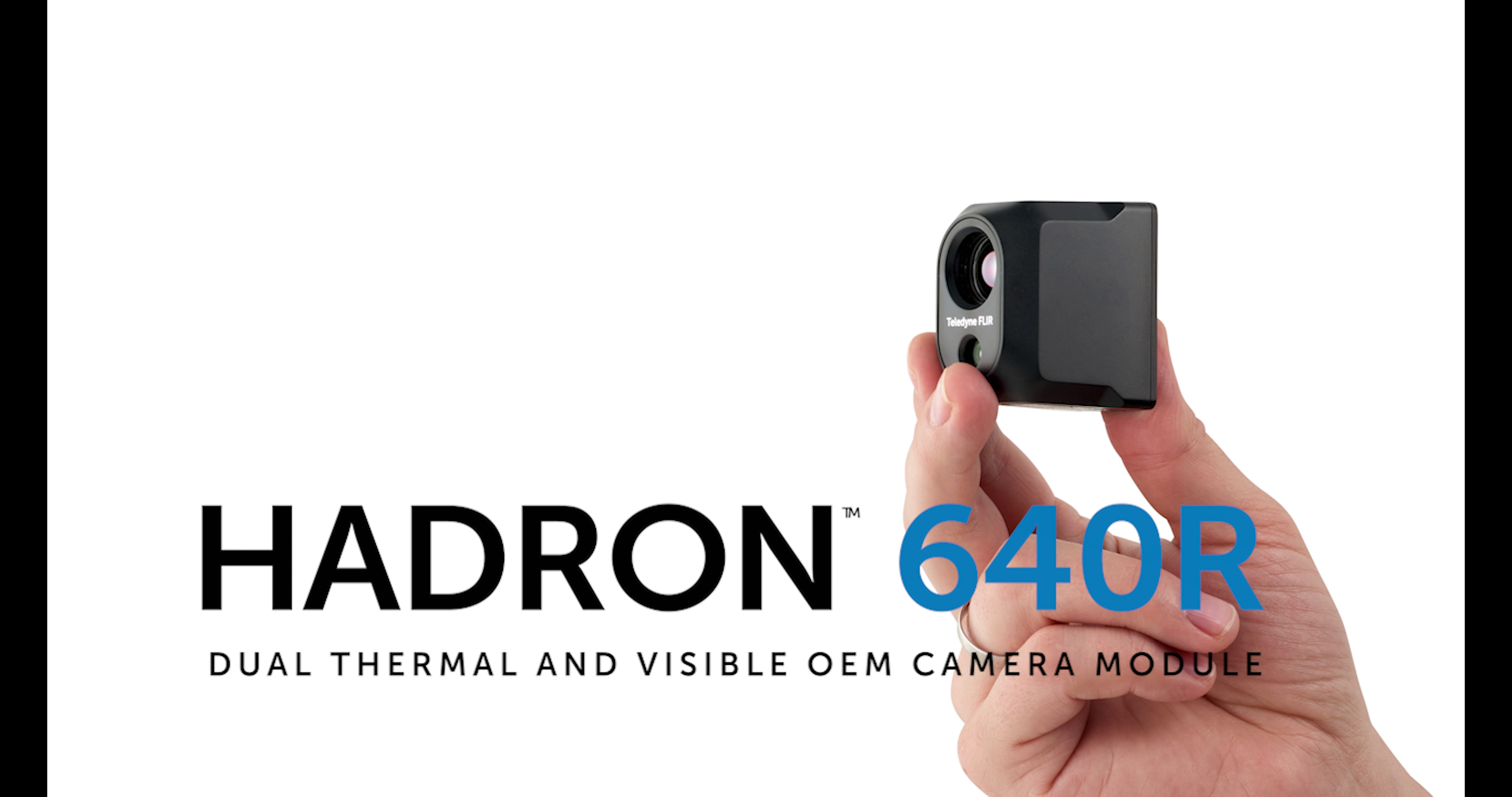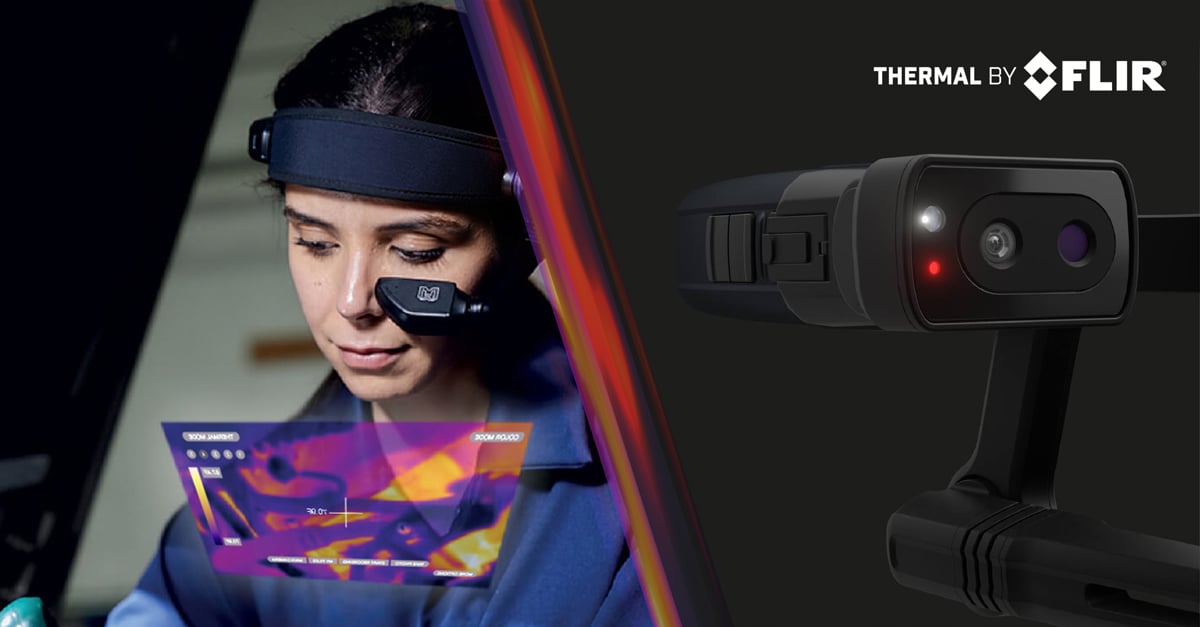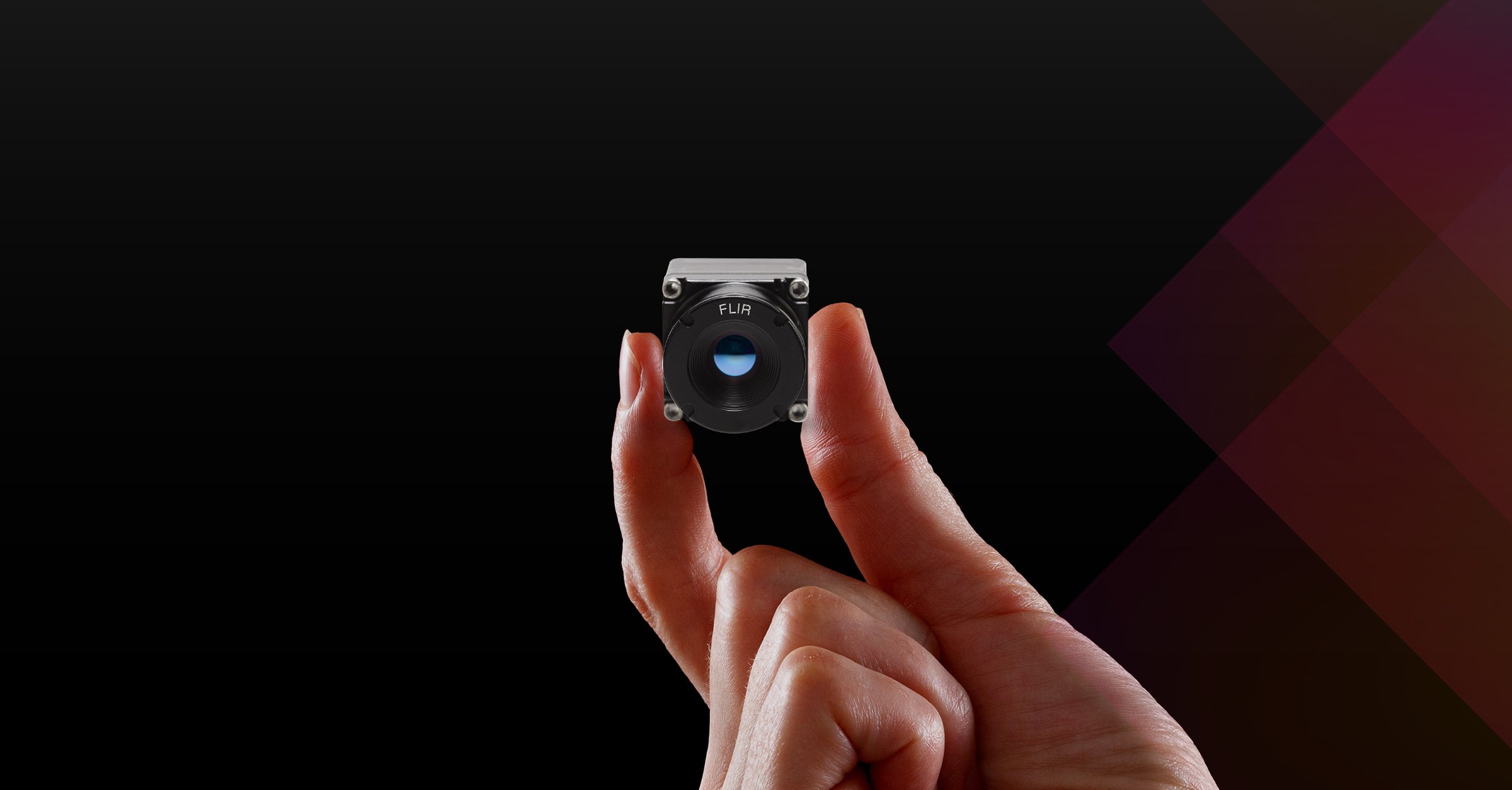FAQ - Everything You Need to Know About the Hadron 640R

TABLE OF CONTENTS
-
GENERAL
-
PERFORMANCE
-
INTEGRATION & SUPPORT
-
EXPORT & COMPLIANCE
-
MANUFACTURING
-
PRICING & PURCHASING
-
CONTROL
-
SOFTWARE
-
HARDWARE
-
WANT TO LEARN MORE?
GENERAL
Q: What are the top three features of the Hadron 640R?
A: Firstly, the Hadron 640R offers industry leading dual thermal and visible camera performance. The 64MP visible camera resolution is unmatched in the industry for this class of payload, while the Boson infrared camera offers radiometry. This means the Hadron can measure and capture the temperature data of every pixel in the scene, valuable information for identifying points of interest both in flight and as part of post-mission processing and analysis.
Secondly, the Hadron 640R features out-of-the-box integration. Featuring an IP54 rating to prevent dust and water intrusion, Teledyne FLIR also offers drivers for market-leading processors from NVIDIA, Qualcomm, and more. This all comes with industry-leading integration support and service from a team of experts.
Thirdly, the Hadron 640R is designed with flexibility in mind for integrators. Not only does the module offer both MIPI and USB3 output, it also offers up to a 60hz thermal framerate for improved data capture and clarity. What is more, the Hadron 640R is incredibly small and light weight, requiring minimum power for when battery life and run time are mission critical.
Q: Why did you develop the product?
A: The Hadron 640R is optimized for integration into unmanned aircraft systems (UAS), unmanned ground vehicles (UGV), robotic platforms, and emerging AI-ready applications where battery life and run time are mission critical.
It also provides an out-of-the-box platform for customers integrating Teledyne FLIR technology into their respective unmanned systems thanks to its game changing resolution, radiometric features, and flexible camera output formats.
Q: Why would I need thermal imaging on a drone?
A: The ability to detect infrared energy offers tremendous benefits for a variety of applications from industrial inspection, farming, defense, and search and rescue, to name a few. Meanwhile, infrared energy exists all around us but is invisible to the naked eye and visible-light camera systems. The ability to detect and measure infrared energy essentially provides a sixth sense, including the ability to see through total darkness, smoke, most fog, and glare, drastically improving the utility of the drone.
Q: Does Hadron 640R measure temperature, and if so, to what level of accuracy?
A: Yes, as a radiometric thermal camera system, the Hadron 640R can measure the temperature of every pixel in the scene. The thermal temperature accuracy is generally around plus-or-minus five degrees Celsius with a wide temperature range of zero to 100 degrees Celsius.
However, in dynamic outdoor environments, temperature measurement accuracy is highly variable, and requires additional expertise and training from the pilot or operator to compensate for environmental factors that can affect temperature accuracy. Those factors could include the emissivity of objects in the scene, solar loading on objects in the scene, the present outdoor air temperature, wind speed, and time of day, to name a few.
Q: Is it the same as the Duo ProR?
A: No. The Hadron 640R is a dual camera module that can be integrated into sUAS, UGV, or robotic systems, versus the Duo Pro R, which is a complete camera payload system primarily for sUAS platforms.
PERFORMANCE
Q: What is the performance of Hadron 640R?
A: The Hadron 640R features the Teledyne FLIR Boson long-wave infrared (LWIR) module, offering 640x512 thermal camera resolution with radiometry. The Boson is paired with a 64MP visible camera in a compact form factor featuring both MIPI and USB3.0 output along with up to a 60hz thermal framerate.
Q: What thermal camera is in it?
A: Inside the Hadron 640R is Teledyne FLIR’s 640x512 resolution, 12um pixel radiometric Boson with MIPI and USB3 output, providing temperature measurement of every pixel of the scene.
Q: What visible camera is in it?
A: This is a Teledyne FLIR custom design made exclusively for the Hadron 640R and not available anywhere else. The 64MP resolution is unmatched in the industry today for this class of payload.
Q: How is it better than the existing Hadron 320?
A: The new Hadron 640R has significantly higher resolution on both the visible (EO) and thermal cameras plus MIPI and USB3.0 output. The 640x512 thermal resolution Boson provides four times as many pixels versus the 320x256 thermal resolution on the Hardon 320, while the visible camera is 64 MP camera versus 12 MP on the predecessor module.
INTEGRATION & SUPPORT
Q: Who is the target customer and why?
A: The Hadron 640R is designed for integrators that require a dual thermal-visible camera systems for unmanned and robotic applications, including unmanned aircraft systems (UAS), unmanned ground vehicles (UGV), robotic platforms, and emerging AI-ready applications where battery life and run-time are mission critical.
Teledyne FLIR also developed the Hadron 640R to speed development. It offers both design flexibility through multiple imaging output types and driver integration, but within a size, weight, and power (SWaP) optimized design for out-of-the-box integration backed by industry-leading support and service.
Q: Is it being used in other TELEDYNE FLIR products?
A: Yes. Teledyne FLIR will share more details on those products as they become available.
Q: Do you have any customers you can share with us?
A: The Hadron 640R is currently being integrated into a variety of Teledyne FLIR and outside customer products with product releases planned for this year and in 2023. We will keep you appraised as we are able to disclose customers and future products.
Q: Who is using it and what for?
A: Our existing customers prefer not to be identified at this time, but what we can say is common applications include commercial, industrial, and military sUAS, UGV, and robotic systems requiring next generation dual thermal-visible image quality with easy integration.
Q: How do you envision integration of Hadron 640R as a component?
A: The Hadron 640R must be mechanically integrated onto a customer gimbal or other customer provided mounting system. To support this effort, Teledyne FLIR offers a reference interface board to demonstrate the electrical connections required. It also comes with reference software and drivers for the Nvidia Jetson Nano and Qualcomm Snapdragon rb5 microprocessors to aid integrators in the development of their own respective drivers for their host processor of choice.
Q: What integration support do you offer?
A: Teledyne FLIR provides drivers and reference software to aid integrators in their respective hardware and software development, including the code for their specific system. Teledyne FLIR has also partnered with driver development specialists who customers can engage for engineering development support as needed. Fees are based on the scope of support required.
EXPORT & COMPLIANCE
Q: Can you export the Hadron 640R outside the USA?
A: Hadron 640R is a dual use product under US Department of Commerce jurisdiction and is classified as ECCN 6A003.b.4.b.
Q: Does Hadron 640R have any certifications, including CE, RoHS, or REACH?
A: RoHS, REACH, and WEEE certifications are in progress and will be complete prior to shipment. Hadron 640R has been independently tested for resistance to dust / water and received an IP54 rating.
MANUFACTURING
Q: Where is it manufactured?
Components are sourced globally but the final Hadron 640R assembly and final quality testing is conducted in the USA. No components are sourced from the People’s Republic of China.
PRICING & PURCHASING
Q: What is the price?
A: The Hadron 640R MSRP is $3,520 USD, available from Teledyne FLIR and resellers worldwide. For availability in specific geographies and pricing and other currencies, visit TeledyneFLIR.com for more details.
Q: How many have you or do you plan to sell?
A: Teledyne FLIR does not offer sales projections on specific products at this time.
Q: Do you offer discounts for volume purchasing?
A: For customers ordering in sufficient volume, Teledyne FLIR is willing to negotiate special pricing. Furthermore, those customers have the option of Hadron 640R customized color schemes to match a customer platform design. Otherwise, the standard color is black.
CONTROL
Q: What support equipment (controllers, etc.) are needed to operate?
A: Hadron 640R is an integration module that must be paired with a host microprocessor. During development, an integrator will purchase a development board from the manufacturer of their selected microprocessor. Teledyne FLIR offers drivers and an interface board (sold separately) to enable communication between the Hadron 640R and development board. This test set up will enable an integrator to modify Teledyne FLIR’s drivers or build new drivers using the Teledyne FLIR drivers as reference software.
Q: How do I control the camera? Can I send commands to both sensors over USB?
A: Communication with the EO camera is achieved via MIPI or I2C. For the Boson camera MIPI, I2C, or USB protocols can be used. These are selections made by the integrator based on their system design and goals.
SOFTWARE
Q: Does Hadron 640R perform any “image blending” and edge sharpening, such as MSX?
A: The out-of-the-box Hadron 640R does not include MSX or other existing “imaging blending” Teledyne FLIR technology; however, Teledyne FLIR is willing to work with customers who require these capabilities as part of additional design services and support scoped into a given project.
Q: What software would be used to view the video feed?
A: The video feed is enabled by camera drivers. Teledyne FLIR offers drivers for the NVIDIA Jetson Nano and Qualcomm rb5 microprocessors, which can be used directly (likely with certain customizations by the integrator) if using those host processors or used indirectly as reference material so the integrator can develop their own drivers.
Q: Can I use FLIR Thermal Studio Pro with Hadron 640R?
A: Potentially yes. However, Thermal Studio Pro compatibility is ultimately determined by the integrator.
For Teledyne FLIR products featuring the Hadron 640R, we will share specifics as they become available.
HARDWARE
Q: Is there any other hardware or software required to produce imagery? If so, what minimum hardware or software is required or recommended to get images and video from the camera, such as a Raspberry Pi 2 or NVIDIA Nano entry-level computer?
A: The Hadron 640R integration module requires a host microprocessor, an electrical interface, a mechanical interface, and software drivers. Reference examples of these interfaces and drivers are available from Teledyne FLIR. Integrators will also likely need a development board purchased from the supplier of their desired microprocessor.
Q: Is Hadron 640R agnostic to the platform it is on?
A: Yes
Q: Is there any mounting hardware included with Hadron 640R?
A: The Hadron 640R includes a screw mount on the back plate of the module. An interface board is available to connect Hadron 640R to a microprocessor manufacturer’s development board and to base the integrator’s own electrical and mechanical connections on.
Q: Do you have a gimbal for it?
A: Although Teledyne FLIR manufactures its own gimbals for sUAS systems, the Hadron 640R does not include a gimbal.
WANT TO LEARN MORE?
Visit the Hadron 640R page for more details OR fill out the form above and a product expert will get back to you shortly!



